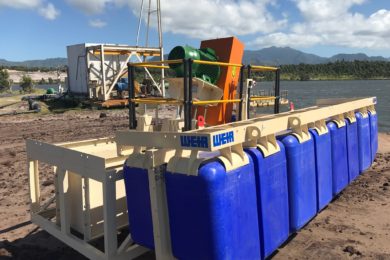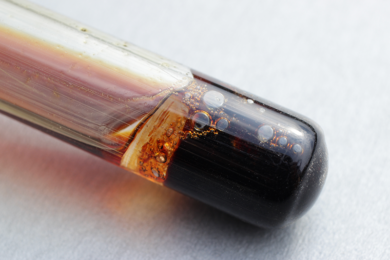Weir Minerals Africa has come to the rescue of Rio Tinto’s QIT Madagascar Minerals (QMM) operation, providing the mineral sands miner with a solution to its recurring process pond challenge.
According to Weir Minerals Africa’s Dewatering Product Specialist Neil Matthews, the mine was experiencing continual collapse of the 20 m suction hose to the Warman® AH® 12/10 pump mounted on a skid at the back of the process pond. This resulted in the need to keep priming the pump and, therefore, regular downtime.
“Unpacking the issues facing the customer was the first part of upgrading the mine’s process water utilisation,” said Matthews. “We discussed several options with the customer after which our dewatering and engineering teams collaborated closely to design a solution. It was vital to carefully consider the problem in the context of the geographic and site conditions, as well as the local fauna and flora.”
To provide the most suitable Weir Minerals products and solutions, the team specified a Warman® AH® 10/8 pump mounted on a Multiflo® pontoon (pictured) with the pump coupled to a variable frequency drive facilitating greater flexibility in dealing with varying site conditions. A second pontoon was fitted with a Warman® AH® 6/4 pump with motor and fixed speed drive as design conditions should remain constant throughout the life of mine.
Both pontoons are connected to a floating docking station which is, in turn, connected to a 20 m walkway fixed to the bank-side landing.
“It is standard practice in most of our pontoon designs to mount the pump sets at 30° to submerge the suction eye of the impeller, thereby ensuring consistent priming,” Matthews says.
One of the most important factors affecting the solution was Madagascar’s weather conditions, according to Weir. This includes regular tropical storms and high wind speeds, which have the effect of creating wave action and wind loading on the pond during storms. The pontoon solution had to accommodate this.
To address the wave action and minimise possible structural damage, the fixed walkway was designed to incorporate a pivot system on the bank landing structure. This allowed the entire assembly, including the docking station, to rotate 90° and still be tied down to the shore during these storms.
Matthews said: “Madagascar is also known for its varied wildlife, including crocodiles, so the design of the handrails and other structures needed to prevent crocodiles from gaining access to the deck space.”
These reptiles would tend to climb onto the deck to bask in the sun, making it almost impossible for staff to conduct routine maintenance. Restricting this access was achieved by closing all the gaps between the handrails and the separate structures.
“Our design took all the site conditions into account, making for better and more predictable operational reliability,” Matthews said. “Both the pontoons and the pumps can now be easily moved for servicing or for securing during bad weather.”
He highlights that Weir Minerals Africa’s team’s experience with mounting pump sets onto pontoons and its extensive process-related knowledge played a significant role in developing the product offering for the customer.
“It was also important for the design engineers to be present during the commissioning process to ensure support,” Matthews concluded.










